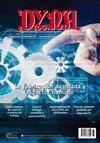INTELLIGENT MODULAR CHILDREN'S FURNITURE DESIGN
IF 0.7
4区 工程技术
Q3 ENGINEERING, MULTIDISCIPLINARY
引用次数: 0
Abstract
Nowadays, the digitisation of products occupies a very significant space in the product market, as incorporating new functionalities means satisfying new needs for users. Likewise, there is a debate between the programmed obsolescence of products that use technology within their useful life. This work aims to connect the benefits provided by technology within products by projecting a proposal that has a longer useful life thanks to the adaptation of the product to the user. It deals with the design of children's furniture, an intelligent cot, which adjusts to the needs of the first stage of life by including sensors and components that improve the baby's rest, and which, in turn, incorporates modularity in its design to be able to adapt to the following stages of the child's life up to the age of 12. The proposed methodology incorporates a series of methods and techniques that provide a 5-phase structure that includes a group of experts who work transversally in the product design process to strengthen decision-making and prioritisation of the needs raised. Several alternatives are developed and, thanks to the evaluation based on the needs extracted at the beginning of the process together with the design requirements, the one that best satisfies both areas is chosen. Key Words: Product design, Modularity, Children's furniture, Adaptable design, Smart Childcare智能模块化儿童家具设计
如今,产品的数字化在产品市场中占据了非常重要的位置,因为融入新功能意味着满足用户的新需求。同样,在产品的使用寿命内,使用技术的产品是否会按程序报废也是一个争论的焦点。这项工作的目的是将技术为产品带来的益处联系起来,通过产品对用户的适应性,提出一种使用寿命更长的方案。 它涉及儿童家具--智能婴儿床的设计,通过加入传感器和组件来改善婴儿的休息,从而适应婴儿出生后第一个阶段的需求,反过来,它还在设计中加入了模块化功能,以便能够适应儿童生命的后续阶段,直至其 12 岁。 所建议的方法包含一系列方法和技术,提供了一个 5 个阶段的结构,其中包括在产品设计过程中横向工作的专家组,以加强决策和对所提出需求的优先排序。在这一过程中,专家小组成员横向参与产品设计过程,以加强决策和对所提需求的优先排序。在这一过程中,专家小组成员开发了多个备选方案,并根据流程开始时提取的需求和设计要求进行评估,最终选择了最能同时满足这两个方面需求的方案。 关键字产品设计、模块化、儿童家具、适应性设计、智能儿童护理
本文章由计算机程序翻译,如有差异,请以英文原文为准。
求助全文
约1分钟内获得全文
求助全文
来源期刊

Dyna
工程技术-工程:综合
CiteScore
1.00
自引率
10.00%
发文量
131
审稿时长
6-12 weeks
期刊介绍:
Founded in 1926, DYNA is one of the journal of general engineering most influential and prestigious in the world, as it recognizes Clarivate Analytics.
Included in Science Citation Index Expanded, its impact factor is published every year in Journal Citations Reports (JCR).
It is the Official Body for Science and Technology of the Spanish Federation of Regional Associations of Engineers (FAIIE).
Scientific journal agreed with AEIM (Spanish Association of Mechanical Engineering)
In character Scientific-technical, it is the most appropriate way for communication between Multidisciplinary Engineers and for expressing their ideas and experience.
DYNA publishes 6 issues per year: January, March, May, July, September and November.
 求助内容:
求助内容: 应助结果提醒方式:
应助结果提醒方式:


